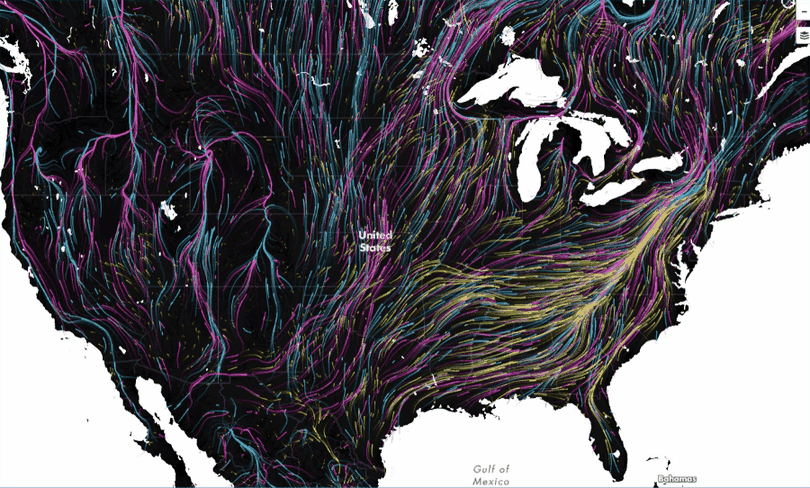Climate change influences on wildlife migrations mapped

ENVIRONMENT -- A compelling animated map showing the projected flow of mammals, birds and amphibians in the Western Hemisphere as the species gradually respond to climate change has been created by the University of Washington and The Nature Conservancy.
Scientists predict that as Earth warms and climate patterns morph in response, animals will be forced to move to survive. That usually means hightailing it to higher latitudes as equatorial areas become too hot and dry, reports Michelle Ma in a story for UWToday.
This movement pattern has happened fluidly and naturally in the past as climates have shifted, but now with human developments such as cities, highways and agriculture, critical animal migrations will be limited in surprising and troubling ways, scientists say in her story.
The map is based on a study published in Ecology Letters that considered the likely movement patterns of nearly 3,000 species under climate change — determining which areas will be hot spots for animal migration in the coming decades and centuries.
TNC and UW recently launched the information in Migrations in Motion. Each dot and subsequent streaking line show the accumulation of species’ movement, not just one animal’s future migration,
According to the UWToday story:
- In the U.S., they predict that the Appalachians will likely serve as a highway for species moving north.
- In the west, mountain ranges and protected areas will also serve as conduits, but many of the higher mountains will also serve as refuges themselves.
- As depicted in the animations,scientists predict a mass exodus toward northern regions, with empty black zones showing where large cities or landscape features like the Great Lakes block migration.
- It’s important to note that each dot and subsequent streaking line show the accumulation of species’ movement, not just one animal’s future migration, Lawler explained.
- In South America, the most striking pattern is a projected movement of species west out of the Amazon.
Read more about Migrations in Motion on the Conservancy’s blog, and see related stories in Wired, The Atlantic’s CityLab and Fast Company.
